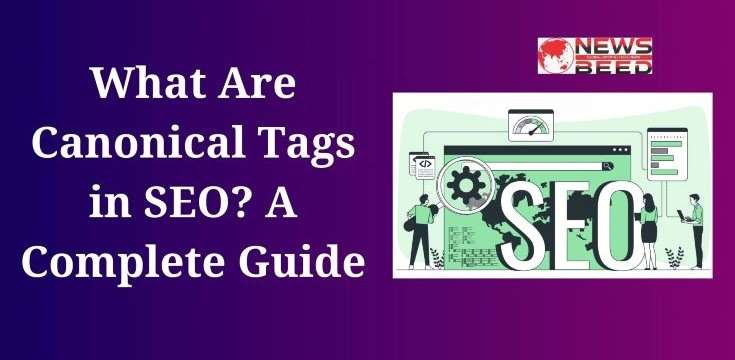Canonical tags are a crucial component of the SEO (Search Engine Optimization) toolkit, used by webmasters to manage duplicate content issues and signal to search engines which version of a content is the primary or “canonical” one. This is particularly important in a digital environment where content can easily be replicated across different URLs, leading to potential search engine ranking dilution and a less optimal user experience. Over the next sections, we’ll explore the concept, implementation, benefits, and considerations of canonical tags in depth.
Table of Contents
ToggleUnderstanding Canonical Tags
A canonical tag, officially known as a “rel=canonical” link element, is a way of telling search engines that a specific URL represents the master copy of a page. It helps search engines understand which version of a URL you want to appear in search results, preventing problems caused by identical or “duplicate” content appearing on multiple URLs. Essentially, it’s a way to say, “Of all the pages with similar content, this page is the most representative and should be prioritized in search results.”
The Importance of Canonical Tags
Duplicate content can significantly hinder a website’s SEO performance. When multiple pages have similar or identical content, search engines might struggle to decide which version is more relevant to a search query. This confusion can lead to several issues:
- Diluted Page Authority: Link equity is split across multiple versions of the same page, weakening the ranking potential of each page.
- Wasted Crawl Budget: Search engines might spend valuable crawl budget on duplicate versions of content rather than discovering new, valuable content.
- Lowered Rankings: Search engines may penalize websites for what appears to be an attempt to manipulate rankings with duplicate content.
By implementing canonical tags, webmasters can mitigate these risks, consolidating link equity to a single URL, ensuring search engines crawl and index their site more effectively, and maintaining the integrity of their site’s rankings.
How Canonical Tags Work
When you add a canonical tag to the HTML head of a webpage, you’re effectively guiding search engines toward the preferred version of that page. For instance, if you have two URLs with similar content:
http://www.example.com/pagehttp://www.example.com/page?tracking=fb
You can add a canonical tag to the <head> section of the HTML of each version, pointing to the version you prefer as the canonical version:
<link rel=”canonical” href=”http://www.example.com/page” />
This tag tells search engines that the version without tracking parameters is the preferred one, helping to consolidate rankings and link equity to that URL.
Best Practices for Implementing Canonical Tags
1. Self-Canonicalize: Even if there aren’t multiple versions of a page, it’s good practice to self-canonicalize. This means adding a canonical tag pointing to the URL itself. Which can prevent issues caused by URL parameters or session IDs.
2. Use Absolute URLs: Always use the absolute URL (including the http or https protocol and the domain name) in the href attribute of the canonical tag to avoid confusion.
3. Consistency: Ensure that the canonical tag on a page points to a URL that resolves to the same content and that redirects don’t point to a URL different from the canonical one.
4. Cross-Domain Canonicalization: If you syndicate content across different domains. You can use canonical tags to point to the original content on your primary domain. This helps prevent duplicate content issues across domains.
5. Handling Pagination and Filtering: For websites with paginated content or filtering options, carefully consider how canonical tags should be used. Sometimes. It’s appropriate to point canonical tags on filtered versions back to the main category page to concentrate link equity.
6. Audit Regularly: Regularly audit your site’s use of canonical tags to ensure they’re correctly implemented and haven’t been accidentally altered or removed.
Benefits of Using Canonical Tags
Canonical tags offer several benefits in SEO:
- Preventing Duplicate Content Issues: They help search engines understand which content is original or preferred. Thus preventing penalties associated with duplicate content.
- Consolidating Link Equity: By pointing all variations of a page to a single canonical URL. all link equity is directed to one page, enhancing its ranking potential.
- Improving User Experience: Canonical tags help ensure that users are directed to the most relevant or authoritative page, improving their site experience.
- Flexibility in Content Management: They provide a way to manage syndicated content, printer-friendly versions of pages, or parameter-driven content variations without harming SEO efforts.
Common Use Cases for Canonical Tags
Canonical tags can be used in various scenarios, including:
- Syndicated Content: When content is published across multiple sites, a canonical tag can be used to point back to the original article.
- E-commerce Product Variations: For products that have multiple URLs due to size, color, or other attributes, canonical tags can direct search engines to a primary product page.
- URL Parameters: Pages that are accessible through different URL parameters (e.g., tracking or sorting parameters) can use canonical tags to point to the parameter-free version of the URL.
Considerations and Best Practices
While canonical tags are powerful, they should be used thoughtfully:
- Always point to accessible URLs: The canonical URL must be live and not redirected or error-prone.
- Use with care on cross-domain content: When pointing a canonical tag to another domain, ensure you have control over the target domain, or your SEO efforts could benefit another site.
- Self-referencing canonical tags: It’s a good practice to include a canonical tag pointing to the current URL on pages that are not duplicates, to preemptively handle any potential duplicate content issues.
- Consistency is key: Ensure that internal linking structures and sitemap entries reflect your canonical preferences, reinforcing the signal to search engines.
Common Mistakes to Avoid
- Incorrect URL in Canonical Tag: Ensure the URL specified in the canonical tag is correct and accessible. Incorrect URLs can lead to loss of traffic and rankings.
- Conflicting Signals: Avoid using canonical tag that conflict with other signals, like redirects or the
noindextag. Consistency is key to effective canonicalization. - Overuse: Don’t over-rely on canonical tags to fix all duplicate content issues. Where possible, physically consolidate duplicate content or use other methods, like 301 redirects, to manage duplicate content more effectively.
You May Also Read:
What is Digital Marketing in Hindi
SEO Interview Questions and Answers
What is Affiliate Marketing Meaning
Conclusion
Canonical tags are a powerful tool in the SEO toolkit, allowing webmasters to guide search engines toward the most relevant version of their content. Thus improving their site’s SEO performance. By understanding and implementing canonical tags correctly. You can avoid duplicate content issues, consolidate link equity, and ensure that your site is crawled and indexed more efficiently by search engines. Like any SEO strategy, the key to success with canonical tag lies in careful planning. Consistent implementation, and regular monitoring to ensure that they continue to support your site’s search performance.
FAQs:
Q1. What is a canonical tag?
Ans: A canonical tag (also known as “rel canonical”) is an HTML element. That helps webmasters prevent duplicate content issues by specifying the “canonical” or “preferred” version of a web page. It’s used to tell search engines which version of a URL you want to appear in search results.
Q2. Why are canonical tags important for SEO?
Ans: Canonical tags are crucial for SEO because they help search engines understand which URLs represent the same or very similar content. By specifying the preferred URL, you can avoid problems related to duplicate content. Thus ensuring that search engines index and rank your content properly.
Q3. How do I use a canonical tag?
Ans: You can use a canonical tag by adding a line of HTML code to the <head> section of your webpage. The tag looks like this:
<link rel=”canonical” href=”https://www.example.com/preferred-url”/>
Q4. Can I have multiple canonical tags on a single page?
Ans: It’s best practice to have only one canonical tag on a single page. Having multiple canonical tags can confuse search engines and dilute the effectiveness of the canonicalization directive.
Q5. What happens if I don’t use canonical tags?
Ans: If you don’t use canonical tag on pages with duplicate or very similar content. Search engines might struggle to determine which version of the content to index and rank. This can lead to issues such as split link equity among duplicate pages. Lower rankings, or the wrong version of the page appearing in search results.
Q6. Can canonical tags be used across different domains?
Ans: Yes, canonical tags can be used across different domains. This is useful in scenarios where the same content is published on multiple domains. By specifying a cross-domain canonical tag, you can consolidate link equity and help ensure. That the preferred domain’s version of the content ranks in search results.
Q7. Do canonical tags affect the user experience?
Ans: Canonical tags do not directly affect the user experience since they are part of the page’s HTML code and are not visible to users. Their primary purpose is to guide search engines in how to index and rank content.
Q8. Are there any alternatives to using canonical tags?
Ans: While canonical tag are a preferred method for handling duplicate content, other techniques can also be used, such as 301 redirects for permanently moved content, using the noindex meta tag to prevent certain pages from being indexed, or properly managing parameters in URLs. However, these methods serve different purposes and might not be suitable replacements in all situations.





Looking forward to your next post. Keep up the good work!
I love how this blog promotes a healthy and balanced lifestyle It’s a great reminder to take care of our bodies and minds
Thank you for creating such valuable content. Your hard work and dedication are appreciated by so many.
I truly admire how you tackle difficult topics and address them in a respectful and thought-provoking manner
Your posts are so well-written and engaging You have a way with words that keeps me coming back for more
Your posts always provide me with a new perspective and encourage me to look at things differently Thank you for broadening my horizons
Thank you for sharing your personal experiences and stories It takes courage to open up and you do it with such grace and authenticity